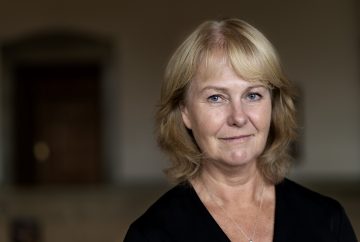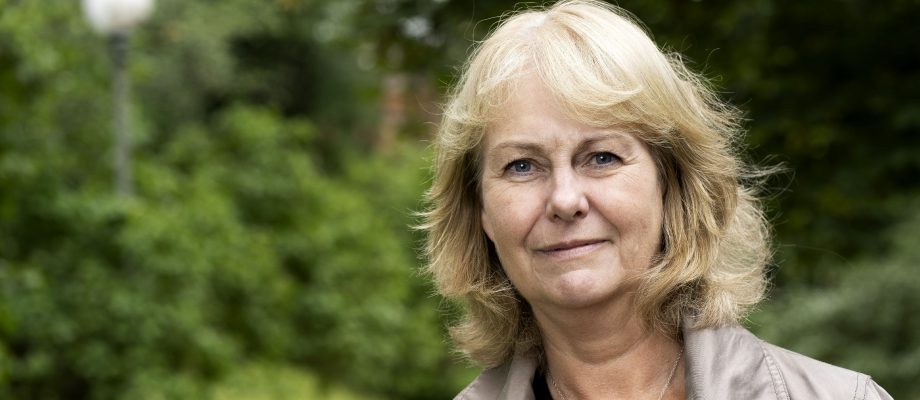PROFILE AREAS. Which areas should be designated as special research areas at the University of Gothenburg? This issue will be investigated in the autumn.
But there is much that is still unclear, such as how the assessment process will work and how much money is really involved.
It is the funds that are currently distributed according to bibliometrics and external grants that in the new system will instead go to strong profile areas, explains Carina Mallard, Deputy Vice-Chancellor for Research.
– In September last year, the faculties submitted 19 proposals for profile areas to the Research Board. Work is now underway to update, rework and possibly merge some of the proposals, which the faculties must have done by 19 September.
After the Research Board has compiled the material, the faculties and the university’s International Advisory Board will rank the proposals, based on three assessment criteria: the scientific quality of the research, the quality of the collaboration with wider society, and how well the research areas match the university’s strategic work for increased quality in research and collaboration.
Proposal in October
By mid-October, the Research Board and the University Management Council will consider the different rankings and agree on a proposal that the vice-chancellor will then decide on, says Carina Mallard.

– In January next year, the higher education institutions will send a brief description of the specializations in the research areas to the Swedish Research Council. This will then form the basis for the appointment of an international panel of ten people who will rate all the proposals. Relevant experts, who will assist the expert panel, will also be appointed.
A complete application must be sent to the Swedish Research Council sometime during spring. The expert panel will then take a position on the applications according to the three assessment criteria, which will be graded according to a three-point scale. Obtaining the highest grade according to all three criteria corresponds to 9 points.
– The special research areas of the higher education institutions will be assessed separately; thus it is not a matter of comparing the different higher education institutions with each other or ranking the individual research areas themselves. In December 2023, the panel’s opinion will be compiled, and in January 2024, the Swedish Research Council will submit a proposal to the government on what investments should be made.
Although there is a process for how the applications will be managed, there is still much that is unclear, Carina Mallard points out.
– Firstly, we do not know how many research areas a major university with a broad scope like the University of Gothenburg can attain, although we think it is about five. And secondly, the budget framework is unclear. According to previous information, it involves SEK 500 million per year, which will be distributed to the various higher education institutions, but whether it is a question of new money or a redistribution of the faculty funds we already receive is unclear.
We also do not know whether the funds will be distributed per higher education institution, regardless of how many research areas the institution is assigned, or whether the funds will be allocated to each research area, which in that case benefits the institutions that are assigned a lot of research areas.
Furthermore, there are other circumstances that increase the level of uncertainty, such as the general election in September and pivotal events around the world that may completely change the conditions for the government’s investments in research.
The facts
The government’s investment in special research areas will entail a new model for quality-based distribution of research grants. These are strategic investments of the highest quality that the higher education institutions themselves will define. The Swedish Research Council, Formas, Forte and Vinnova have developed the model.
The applications can relate to both new and established areas. They will be assessed by an international panel according to three criteria: the scientific quality of the research, the quality of collaboration with wider society and how well the research areas align with the university’s strategic work for increased quality in research and collaboration.
The goal is for the model to be introduced in 2024. The plan is to evaluate the investment after 6–7 years.
The University of Gothenburg’s timetable
September 19: Deadline for the faculties to submit revised proposals for special research areas.
September 26–October 1: Each faculty and the University of Gothenburg’s International Advisory Board will rank all the proposed research areas that have been received.
October 18–27: The Research Board and the Management Council will consider the rankings and submit proposals for decisions.
October 27: The vice-chancellor makes a decision after which an application will be prepared.
January 2023: A summary application will be sent to the Swedish Research Council.
Spring 2023: The finalized application for special research areas will be sent to the Swedish Research Council.
Spring 2024: The government will make a decision.











